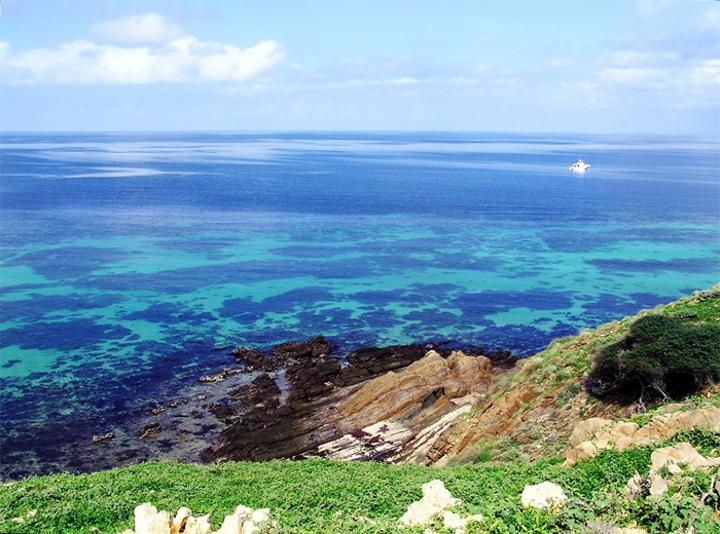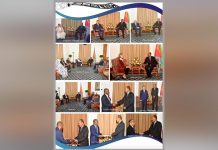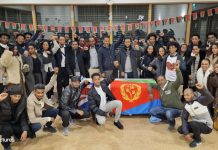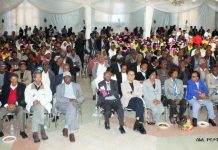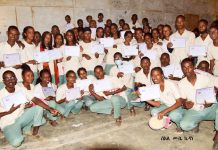Africa-Press – Eritrea. It is home to natural resources including a variety of marine species, incredible landscape, clear and unpolluted seashore, archaeological sites, infrastructure wonders, forestry, wildlife, and more and more. Every rock, every village, and every single place has its own history to tell and magnificence to provide to any lucky individual who visits, but even the lifetime of a man is not enough to study every single place in the Northern Red Sea region of Eritrea.
The region stretches 600 kilometers along the coastal line, and around 450 kilometers inland, a total area of 34,236 square kilometers with every single place of history and scenic beauty. Today, I would like to give you an overview of some select places in the region.
The expedition began from the port city of Massawa, capital of the region, and made its way to the very cradle of Homo sapiens, the Buya area located on the tip of the East African rift valley, around 110 kilometers from Massawa. This is the area where a 1.4 million-year-old Human Cranium of the Homo erectus family that was later identified as remains of a young lady was excavated. From archaeological studies, by local experts from the National Museum of Eritrea and foreign researchers, the skull of the early human remain was unique from the other findings of other corners of the world because it still possesses the full facial feature of the ‘Buya Woman’, and it is believed to have filled the missing link in those transition era.
Buya is also an example of uniquely preserved relics of one up to two million years old stone tools, a large number of fossilized bones of extinct animals, and others. The achulian stone tools are abundant once you lay foot on the Dandero valley of Buya and the very place where the human cranium was found is still preserved, but the actual finding was moved to the National Museum of Eritrea.
The inhabitants of Buya received the visiting group with a warm welcome, and most interesting of all, the banners they were holding signified how well-informed they are in regards to the archaeological importance of their district and reflect how attached they are with the finding of the human cranium and how important it is for Buya to be an area where the very first humans originated.
Crossing the village of Buya, we made our way to the South-Eastern part of the region to finish the first day of the expedition in the sub-zone of Gel’alo. Before going to the destination, however, another archaeological site and of very high significance had to be visited; Abdur, a coastal site that may be the first place where man discovered the possibilities of marine resources.
This site is located on the eastern edge of the Gulf of Zula. The 125,000 years old stone tools discovered within the uplifted marine terraces along this coastline of Eritrea at the Abdur archaeological site show the earliest well-dated evidence of human occupation of the coastal marine environment.
The smooth road that mostly runs side by side with the clear coastal water and sand made the expedition extraordinary. To make matters even more trilling a family of ostriches with around fifty newly born marched crossing the road to the sea as if they were deliberately performing a march to welcome the group.
The second day was yet another very long day but of course full of adventures. As if chronologically sorted, day one started from the early pre-history of man up to where the first sea daring humans originated. The tour, as well as the history of the area, continues from there onwards.
Adulis, is a place of high archaeological importance and an ancient port city, which may be one of the oldest civilizations of the world. Located 56 kilometers from Massawa, archaeological findings in the ancient port city of Adulis show that it existed around 2000 BC and became a major port around 240 BC. The ancient port city reached its apex of prosperity and influence from 100-700 AD. Adulis was a famous port harboring many ships at one time and facilitated the transportation of raw materials from the African hinterland to the Arabian land, India and China, and vice versa.
Another harbor, just a few kilometers from the town of Gelalo is Marsa Fatuma. Standing remains of contemporary history from the Italian colonial era make this harbor worth visiting. Historical references date the rise of Marsa Fatuma as one of the main harbors of the Italian colonizers from the early 20th century.
The expedition continued to explore more and enjoy the beautiful scenery along the way. Sunrise in the region is by itself something many people would only see on postcards and to make the tour even more adventurous, the hotel we were staying in was located only a few meters from the sea. By the sides of the road around Erafaile, remains of centuries-old walls stand still narrating the history of the people of the area and their bravery to protect their land from warlords who continuously raided the area to find a Seagate.
After driving in the dusty roads around the Burea peninsula towards the tip to visit a village called Engel, the clear seashore and shimmering crystal clear coastal sands welcome you from afar. By then, it is impossible to feel any exhaustion from the long hours of drive. Most interesting of all, the cultural diversity of the ethnic groups that inhabit the area and their genuine welcoming nature, accompanied by their unique drum beats and their dancing styles, and of course the fresh seafood they provide is indeed another significant factor that makes one stay as long as possible. By far, unpolluted sea and unpolluted people would define this specific section.
The people in the region value the presence of guests and as such accorded the visiting crew with a warm welcome wherever we went. Not only was that the food they served which reflected the rich fish resource of the Red Sea in all the places we visited, was exquisite. We couldn’t stop admiring the people wherever we went; it was like a cooking competition amongst the inhabitants. Every meal served included a variety of fish and cuisine.
Zula is another historical place in the region just a couple of kilometers from the ancient port city of Adulis. Like the other parts of the region, a herd of ostriches on both sides of the road accompanied us until they reached the outskirts of the town located on the Red Sea coast. Upon arrival, the inhabitants of the area received us with face-melting drumbeats of the predominant settlers of the Town; the Tigre, Saho, and Rashaida ethnic groups. To our surprise, each ethnic group has its own style of beats but the sound of all didn’t interfere. On the other hand, they made a perfect harmony that pleased the ears of the entire group.
After almost two hours of lunch rest and breathtaking sea breeze, we made our way for yet another adventure in the port city of Massawa, the region’s capital. But before that, I forgot to mention the natural hot springs on the way to Erafaile. Many people consider it a place where nature heals nerve problems. All you need is a blanket to wrap yourself with and sit over those holes scattered abundantly all the way and receive natural steam from beneath.
After almost two and half hours, we reached the port city of Massawa, an old and modern city. The city as a whole is a blend of Arabic architecture that mostly is related to the Turks and Egyptians as well as some monumental Italian touches. The Architectural splendor of the city by itself needs an entire story to tell, but the main purpose of the visit then was to see what could be the oldest mosque in Africa.
It is called the Sahaba, which means the followers of Mohammed. It was built at around 615 A.D when the first fleeing companions of Mohammed reached on this side of the Red Sea. It is said that the mosque could have been constructed after the followers of Mohammed seek sanctuary in a land across the Red Sea, which according to various historical evidence could be Massawa. As a matter of fact, various other evidence that could underpin this evidence is abundant in various parts of the region.
Towards the east of Massawa, somewhere around five kilometers by the sea, there is an Island called Sheik Seid, which is commonly known as the Green Island. Sheik Seid is a name, which signifies the existence of an ancient mosque on the small Island, while the Green Island could be related to the green view the island provides from afar due to the range of mangrove trees.
According to marine resource experts, the island is a haven for various marine species that includes a place of hatching for sea turtles. Furthermore, the location of the island controls the natural flyway of various bird species from Europe to Africa and the other way round.
Apart from the historical and architectural wonders, Massawa is endowed with, the port city is also a land of bravery and a gateway for the total liberation of Eritrea. Many battles were fought there and miracles were made by the valiant liberation fighters, but the story of resilience in Massawa and Nakfa, the stronghold of the Eritrean Liberation Struggle, will be covered in our next edition.
Just a couple of kilometers from the area is an Island called Delleme. We had to use small local boats to cross the sea. The Island was used by the Italians to control the channel that goes from the Northern part of the Red Sea to the south. Ruins of the walls that were used by the Italians and heavy artilleries are still there on the Island.
From the other end of the Island, the beautiful sound of the sea wave smashing against the cliffs immediately caught everyone’s attention as if it was deliberately calling us to enjoy the beauty and power of nature. The mangrove trees surrounding most of the Islands around the area also provide them a magnificent scenic beauty and cooler breeze.
There is nothing to leave in the area except footprints, because it would ruin the site, and of course nothing to take except photos. It is like driving on pages of history engraved by nature itself. The tour in the Northern Red Sea region doesn’t end here, there is more to tell and more to enjoy.


